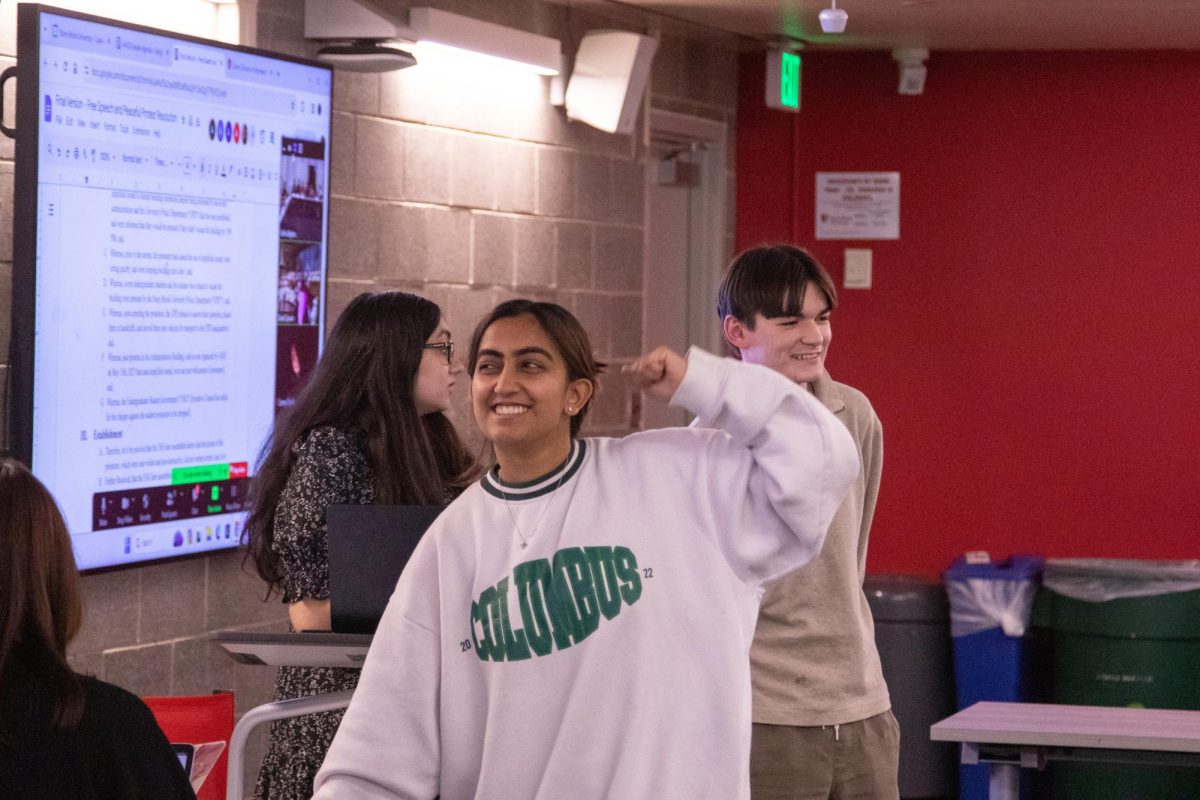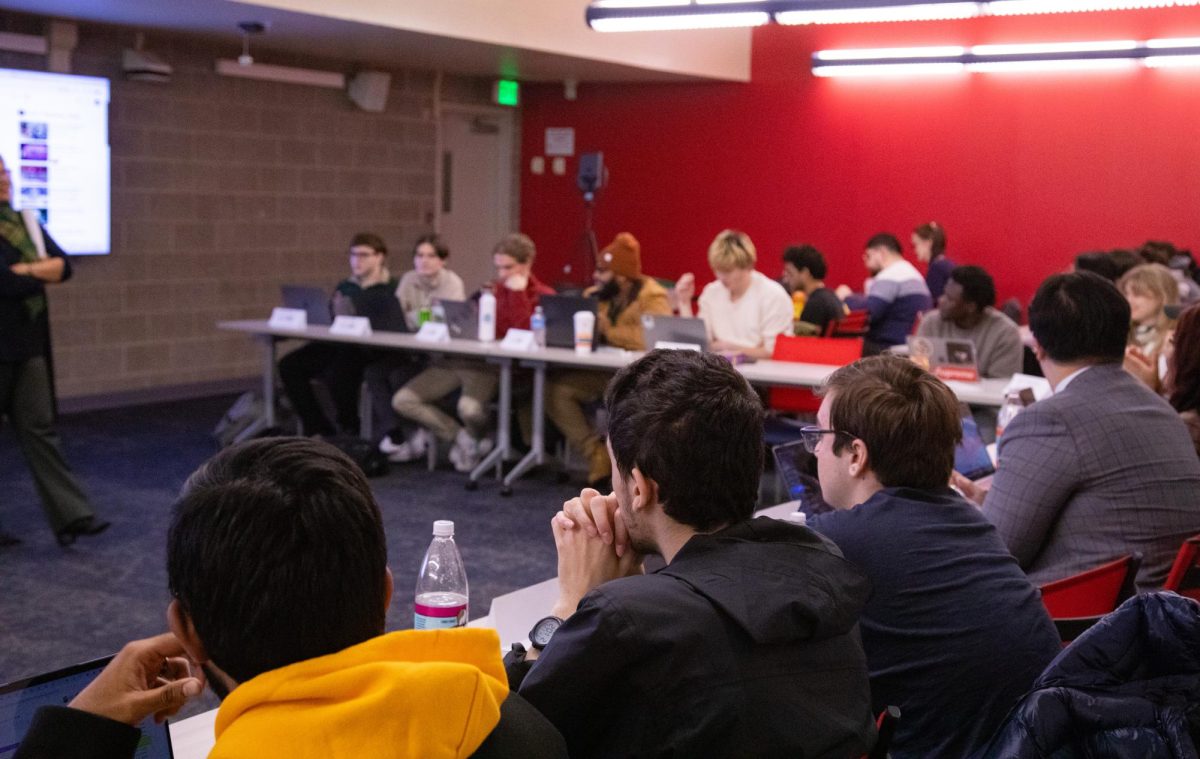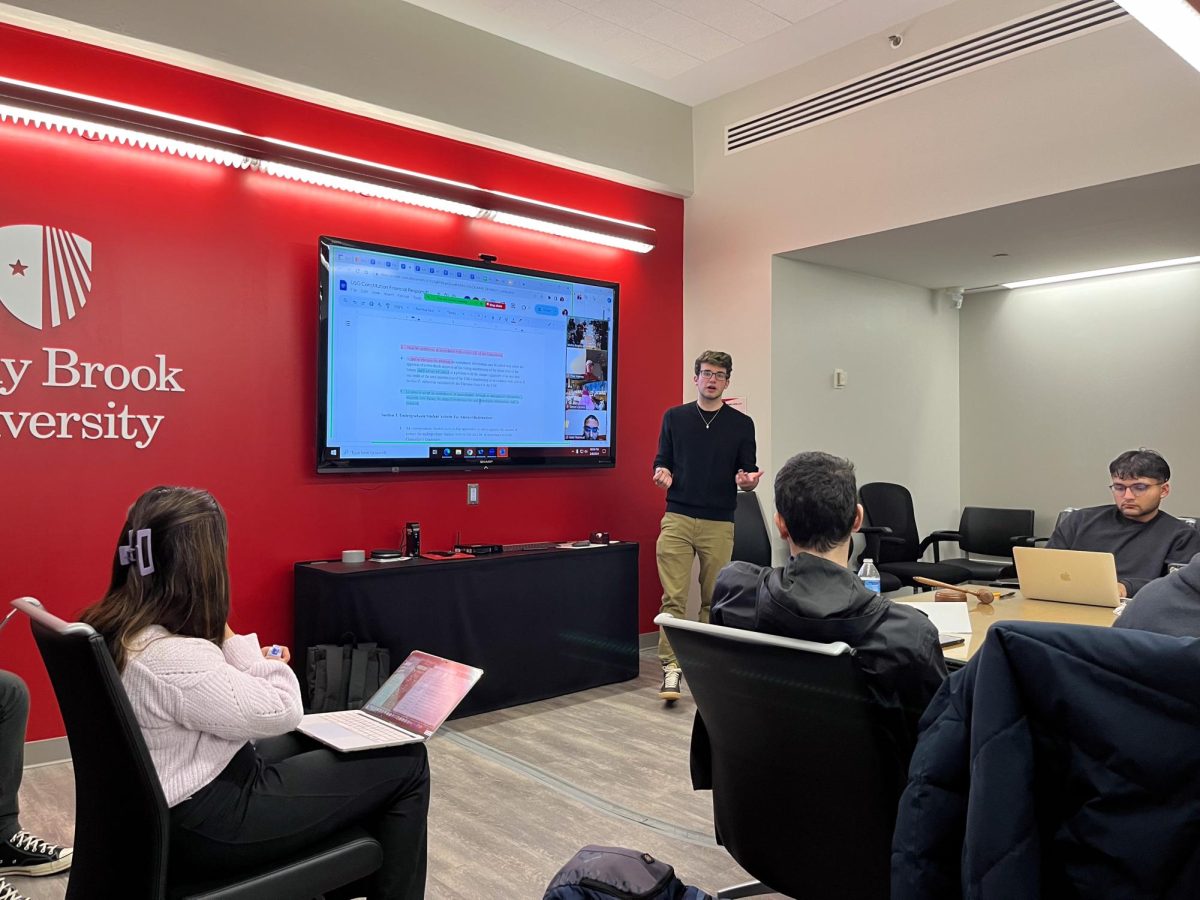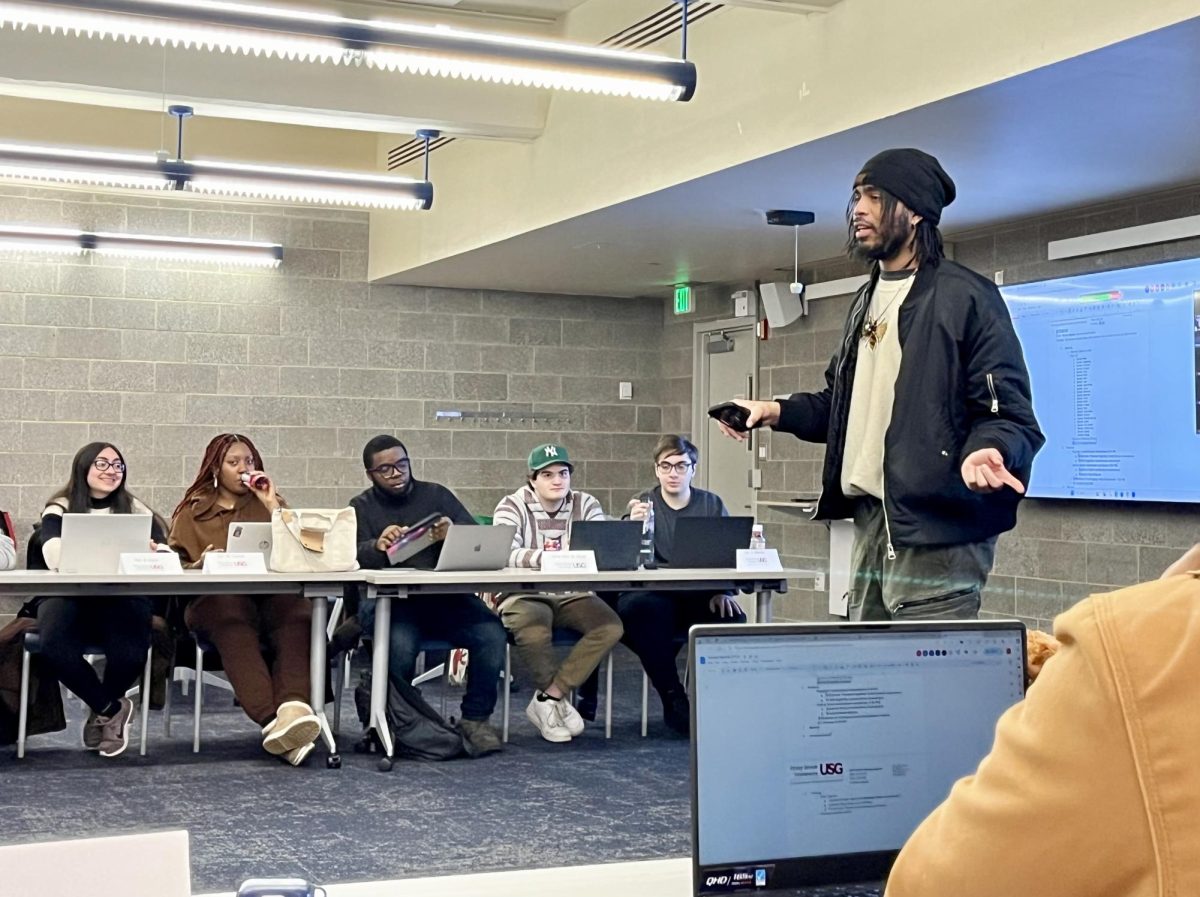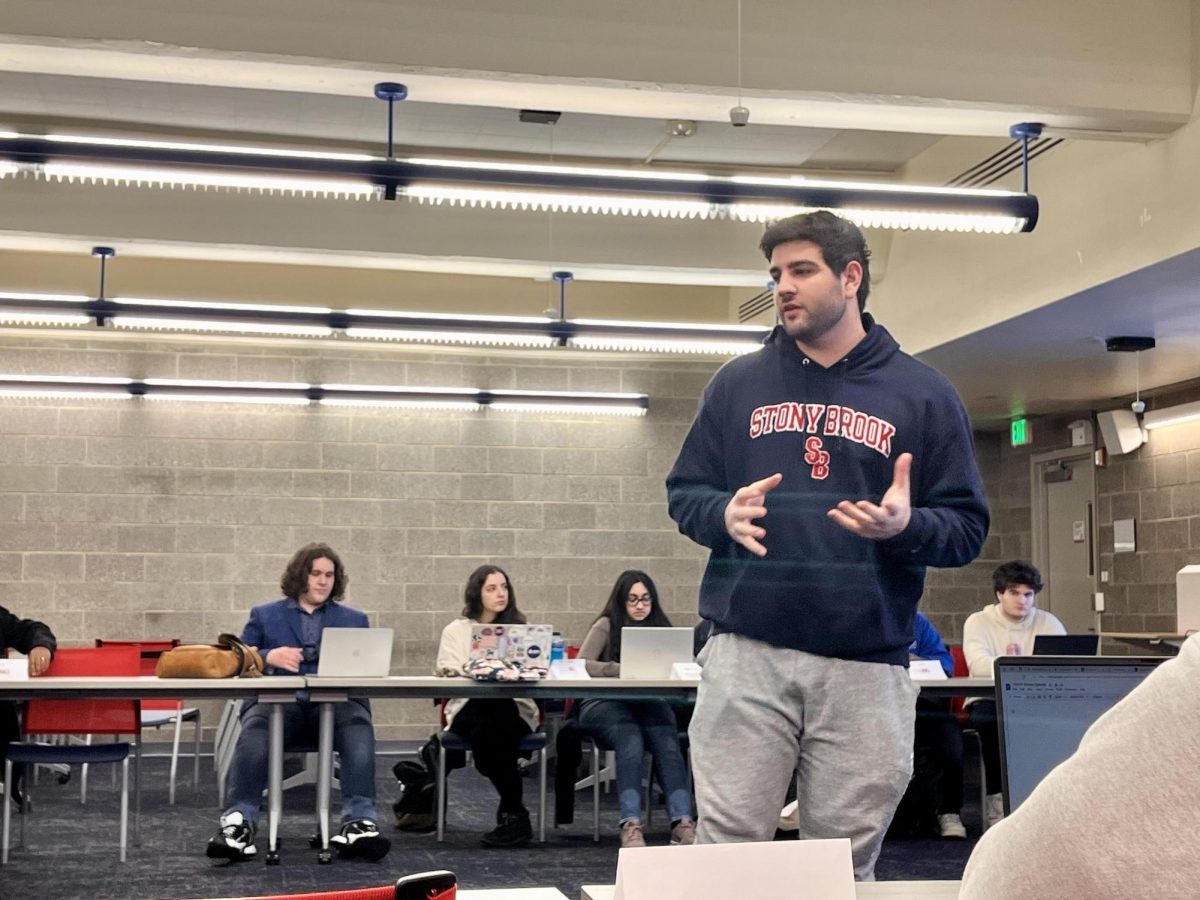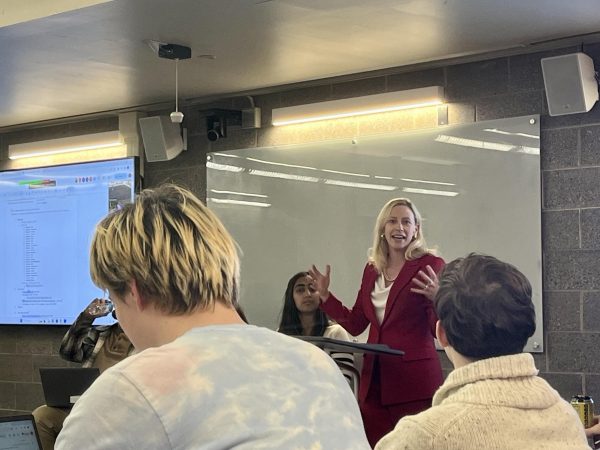
In her visit to the Undergraduate Student Government (USG) Senate meeting on Thursday, Feb. 22, Stony Brook University President Maurie McInnis addressed some concerns brought forth by Senators, specifically how the $500 million donation from the Simons Foundation will be spent.
According to McInnis, there is a lack of understanding by many on how the University is allowed to allocate the money. She first clarified what an endowment entails and explained that the University is not currently in possession of money from the Simons Foundation.
“A promise of a gift in the endowment world means that ‘I’ll give [money] to you over time,’” McInnis said.
She emphasized that the funds would not go toward decreasing the pricing of parking permits or toward improving buildings on campus, as the money dedicated to these efforts are provided by state funds and tuition fees. Instead, these funds would go toward enhancing Stony Brook’s “excellence.”
As explained by McInnis, there can be many restrictions enforced by the donor on what the endowment could be spent on. For example, a donor could sponsor a scholarship with certain requirements such as determining the majors that are eligible and actions the institution would not be able to make if they wanted to receive the money.
“The remarkable [aspect of the] gift from the Simons [Foundation] is that they gave it to us without any specific restrictions,” McInnis said. “They have directional restrictions [of] where it’s supposed to be spent on excellence. That means, we’re going to spend it on supporting faculty in their research and the students, that’s it.”
In addition to the excellence requirement set by the Simons Foundation, the monetary amount that Stony Brook University will spend each year is rather complicated; though in principle, the process is similar to investing.
The example McInnis provided was that the University could spend a certain percentage of an initial principle of $100 million the first year, allowing $4.5 million to be spent at that time. According to McInnis, the University plans to spend around 4.5% of the fund annually.
In the next year, the $100 million will grow slightly based on investments directed by the University, ultimately raising the amount of money that could be spent under the 4.5% limit.
“[The investments are] really to try to make Stony Brook a stronger and better institution so we can attract great faculty to be in the classrooms with us and so they can have the money to do cutting-edge research,” McInnis said.
Moreover, McInnis emphasized how Stony Brook’s current students and administration will most likely not reap the benefits of the Simons Foundation’s gift in the near future.
“I hate to say it, but your student generation is probably never really going to have any money to spend from this endowment, nor will I as president because it’s going to come in very, very slowly,” McInnis said.
The Simons Foundation’s endowment is designed to stretch over a seven-year term. McInnis said that the average term length of a university president is seven years; she is currently serving her fourth year as Stony Brook University’s president.
McInnis’ final remark regarding the Simons Foundation’s gift was that the University’s goal is to expand the school’s endowment from $300 million to $1 billion over the next seven years. This goal could potentially be reached through the Simons Foundation’s donation, the state match fund and other philanthropic donations.
“Stony Brook has a lot of catching up to do,” McInnis said.
At-large Senator Peter Joyce asked if there were ways USG could help to spread information of how endowments work, as there is “a considerable amount of confusion” amongst the student body.
McInnis responded by stating that USG and her administration have collaborated in the past to help explain both the significance of the Simons Foundation’s donation and the endowment process, but it was poorly received.
“We’re happy to do whatever,” McInnis said. “We’re not hiding anything, we want you to understand how it works or how it will work.”
A concern at-large Senator Yuchen Zhang wanted McInnis to address was related to the quality of in-class instruction. He cited how many students feel “a disconnect between faculty and students, especially in the [science, technology, engineering and mathematics] STEM field,” and how overwhelmed students majoring in STEM are especially with exam schedules and workload.
McInnis said she could recall her experience as a student and expressed her concern for the current generation of students.
“There [is] so much variety under 17,000 student schedules that maybe [artificial intelligence] AI can figure out, but not humans about what would be the ideal,” McInnis said.
McInnis then discussed how the administration does not have much control over what faculty members do within their classrooms, and that it is up to faculty members themselves to decide what is best for their classrooms. The most the administration can do is help them “understand the impact of choices on students.”
“I hear you, you’re not the first person to raise this, but we will keep working on it,” McInnis said.
McInnis also raised concerns about academic advising. According to her, the current state of the department relates to a lack of funds.
“When it was at its worst, our ratio was one [advisor] to 1,200 students, so yeah, I am sure that there were enormous complaints about advising,” McInnis said.
The current ratio of academic advisors to students is one to 350 students after Stony Brook University recently received around $22 million from New York State to help cover expenses, such as union workers’ salaries. The ideal ratio, according to McInnis, is one advisor to 200 students.
Prior to receiving the funding, the University would not fill any advising positions once they became vacant. After receiving the money, the University hired 10 new academic advisors and is currently recruiting five more.
“[The student to advisor ratio] is still not really where it should be, but we are constantly needing to make choices that are still starved for money,” McInnis said.
After she addressed the main points she wanted to touch upon, the discussion then moved to a point where Senators could ask whatever questions they had.
At-large Senator Alex Herz asked McInnis, “How do you feel that the University has responded to the students’ response to the violence in the Middle East and where do you draw the line between student safety and suppression?”
McInnis responded with “I’m not aware of any suppression.” Adding on, she said that the University has a “No Chalking” policy that is “content neutral” and “an aesthetic choice and not related to the speech.”
Herz’s question came after pro-Palestinian messages written in chalk on the Academic Mall strip appeared last Wednesday and were removed soon after.
At the end of the meeting, McInnis encouraged the Senators to send over any more questions they had for her and her team to address.











